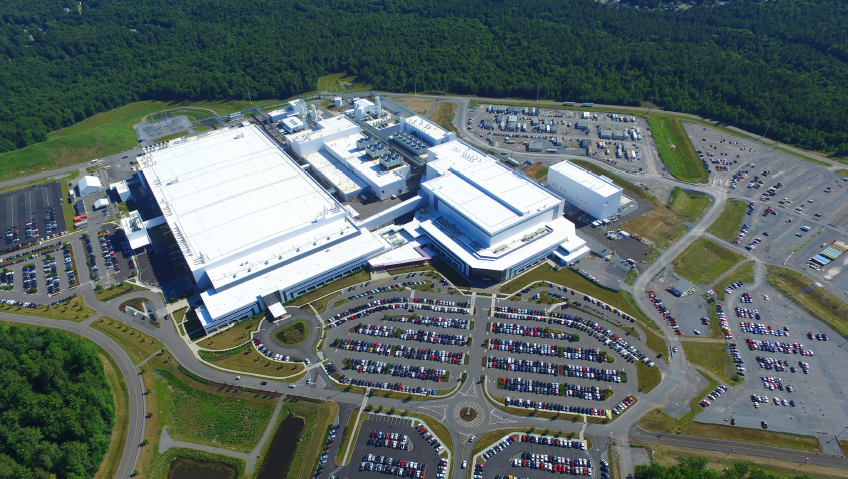For Jordan Davis, few things are as gratifying as seeing a community come together and share the same vision. Director of Community and Economic Development for the City of Pittsburg, California, Davis and his team spearhead business attraction initiatives, transit expansion, strategically located housing projects, downtown beautification, clean technology, and more, all while respecting the city’s rich industrial heritage.
With a population of 77,572, the City of Pittsburg is experiencing plenty of growth and development, including welcoming new businesses and residents. Companies and families alike are moving to the area for reasons that include quality of life, available land, reasonable housing costs, job availability, and, of course, ‘location, location, location.’
On days when there isn’t too much traffic, Pittsburg is 45 minutes from San Francisco, 30 minutes from Oakland, and about an hour from Sacramento. The city boasts convenient walkable amenities like a beautiful downtown with great mom-and-pop stores, restaurants, breweries, and wine bars while remaining relatively affordable for a Bay Area community.
“Pittsburg is a place where families can afford a good size house, put down roots, and continue to live in the city,” says Davis. “That situates us well as far as cost of living goes. We are really in a fantastic position to meet the needs of a lot of different aspects of our community.”
Nurturing opportunities
In his role as director, Davis has seen firsthand the positive results of a city council and local community joining forces; it’s a source of pride and makes his job as a public servant a lot more enjoyable. A native Californian, he came to Pittsburg looking for an opportunity to work in a diverse city with lots of development potential and similarities to some areas in which he was raised.
“I saw Pittsburg as a great place and could see almost immediately everything it had going for it when I visited,” he says. This included the downtown, projects under construction, and the state-of-the-art San Francisco Bay Area Rapid Transit (BART) District, a 50-station, 131-mile (210 km) heavy-rail public transit system.
He was impressed with how the city was run, its financial stability, and the amount of wise investment made in reserves and other activities to ensure a sustainable government.
Immediately accepting a job as a planner, Davis worked in the city manager’s office for a few years before moving on to his current role. “It’s a wonderful opportunity to be so involved in the areas of community and economic development because of the investments the city is making in these areas,” he says. “They’ve put a lot of faith in staff, but also, they put a lot of pressure on themselves to make sure they are delivering on economic development and the economic development potential of the city for its residents.”
Locals take great pride in their community, and the city values their input and is highly receptive to it. “That’s allowed us to make a lot of progress over the 10 years I’ve been here.”
Industrial roots
185 years ago, the area which is now home to the City of Pittsburg was formed following a 10,000-acre land grant from Mexico to the United States. Changing its name several times, it was called ‘Pittsburg’ (no ‘h’) in 1911, after Pittsburgh, Pennsylvania.
Early industries included coal mining, commercial fishing, and boat building. These pioneering industries were followed by giants like U.S. Steel, and Dow Chemical (now Corteva) setting up business in the area. However, times and industries change. After more than a century, the steel mill shuttered at the end of 2023, and Corteva is winding down operations. Both companies kept generations of local families employed.
Rather than bemoaning the loss of these industry giants, the City of Pittsburg sees it as an opportunity to welcome other businesses. “I’m optimistic we’re going to see a lot of newer, clean tech jobs come to the area,” says Economic Development Manager Robert Carrera.
The city has made a commitment to keeping those areas zoned industrial for the long term and proposing alternatives to help potential large employers meet their bottom lines. “We as a city are very development-friendly and always look for ways to make things work here.”
Initiatives include expanding the use of the Pittsburg Power Company (PPC), such that the utility currently provides power to a separate region, allowing it to grow and provide rates at least 20 percent lower than the norm. Other areas include exploring grants and tapping into recycled water infrastructure so employers can use more recycled water, fitting into the area’s master environmental plan.
The area is also home to two Calpine natural gas power facilities, one of which is currently piloting carbon sequestration technology. Pittsburg is also seeing a considerable interest in hydrogen power. A company called H Cycle—which produces low-carbon hydrogen through a unique waste processing system—is planning to develop a facility to create renewable hydrogen on Corteva land.
Fostering a welcoming, business-friendly environment, the City of Pittsburg continues to attract entrepreneurs and companies of all sizes. “We believe we are one place in California where you can do large-scale, large-employment business,” says Carrera.
Smart strategies
Much of the City of Pittsburg’s success comes from vision and thoughtful planning, such as developing new housing conveniently located near the Pittsburg Center BART Station. In 2020, the city put out a Request for Proposal for its planned Bliss Avenue project, seeking a developer to create a mixed-use project of residential and commercial units and related amenities.
According to the city, “This is proposed to be done through increased development intensity and increased pedestrian and transportation linkages in the area within a half-mile radius around the recently opened BART station.” Most of the property is owned by the city and is part of 8,000 new planned homes in the area.
Having BART run through the area has several benefits for the local community. The project is creating much more transit-oriented development geared toward transit centers, increased density, and more walkable development.
The idea of creating a transit village around the new BART station surfaced around 2009. Much planning was involved in extending BART, which opened in 2018. Since then, the city has acquired more property and recognizes the growing demand for housing of all types near public transit. “Not only do we want mixed-use development, but we want mixed-income development that lifts the entire area,” says Davis.
In late 2022, there was a groundbreaking ceremony for a 117-room Courtyard by Marriott hotel. The new hotel is slated for completion this August, and a second is in the works. The Courtyard is less than a quarter of a mile from the BART Station, with a newly opened Starbucks drive-through adjacent to it.
“Pittsburg is no longer just that place where you buy your starter home and look to get out of,” says Davis. “We want to be a place where successful professionals from our schools and our city can continue to live. And the pride in Pittsburg runs incredibly deep. Residents want to see the rewards for how hard they’re working: buying those homes, continuing to purchase nicer homes with more amenities, having a grocery store that’s proximate, a commercial area, parks, and other elements so they can really live, work, and play right in the community that they’re also proud of.”
‘Yes’ to quality
A development-friendly community, Pittsburg is indeed growing strategically, and favors quality over quantity with its initiatives.
With the city working with residents for the greater good, Davis says that the city “has been creative in figuring out how we get to ‘Yes,’ and in getting things done.”
This includes other creative initiatives, such as a $4.5 million trail connecting a regional trail to the BART system; working with the developers of the Marriott to provide a $600,000 grant for construction and a $4.3 million loan for the city-owned property; and doing what it can to cut red tape, change zoning, and get project approvals pushed through faster than before.
For Carrera, Davis, and their team, the big challenge is: what is going to be the main employment driver for the next 100 Years in Pittsburg? For the past century, it was U.S. Steel and Dow Chemical (Corteva), and the city is now transitioning.
“The next three to five years will determine what takes place in those areas,” says Carrera. “We’ve carved out a niche for ourselves, in that we’re leaning into our industrial history. We want to be friendly to industrial uses and provide a place for some of that and new industries. What I’d like to see is ensuring those areas are employment-generating locations that allow folks to live and work here just the way they have for the past hundred years.”






